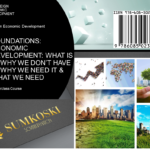“Failure is not an option” is an epic phrase associated with Gene Kranz and the Apollo 13 Moon landing mission, which went terribly wrong, but ended happily thanks to some Mission Control heroics.
Likewise, with a newly-appointed vice premier at the microchip helm, China is leaving itself no more excuses to fail.
The nation’s decision to anoint a “chip czar” is the latest step to advance its semiconductor industry in the face of harsh US sanctions.
While China still has a ways to go in catching up to the US, Taiwan and South Korea, Vice Premier Liu is an obvious and worthy choice to spearhead the development of future semiconductor technologies, Business Standard reported.
He’s headed China’s technology reform since at least 2018 while his position within leader Xi Jinping’s inner circle — also a chief negotiator in US-China trade talks — ensures his recommendations get heard.
The Harvard-educated career bureaucrat is not an engineer, but more of an expert in economics and industrial policy.
These aren’t terrible skills to have, but it means the 69-year old will have to rely on experts when it comes to decisions in his remit: semiconductor materials, equipment and processes.
Rather than merely catch-up, Liu’s chip strategy will likely be to explore areas rivals have yet to master in the hope that China can colonize these technologies.
It’s the kind of moonshot approach that the People’s Republic already practices. China last week released the first images taken on Mars as part of its Tianwen-1 interplanetary mission.
That success, according to Beijing-based consultancy Trivium, “validates the focus on pursuing leapfrog development,” focusing on next-generation technologies where no country has a clear advantage.
Beijing is right to trumpet this success in space, and the results ought to boost morale within its struggling chip sector.
According to the South China Morning Post, China’s output of integrated circuits (IC) in May reached an all-time, single month high, as the country pulled out all stops to produce chips, according to central government data.
China’s chip output in May surged 37.6% from a year ago, to 29.9 billion units, the National Bureau of Statistics date showed.

While China’s chip makers are not able to produce high volumes of advanced 14-nm node chips — the type needed to power the latest iPhones — the country’s chip designers and manufacturers can produce mature technology ICs for home appliances and automobiles, SCMP reported.
In the first five months of this year, China produced 139.9 billion IC units, a 48.3% surge compared to the same period last year, data showed.
The latest data confirms that China is sparing no effort in its pursuit of self-sufficiency in semiconductors, SCMP reported.
In March, Beijing moved to waive levies on imported semiconductor parts and materials until 2030, SCMP reported. The Chinese government has declared its ambition to cultivate a US$237 billion domestic component market by 2023.
Meanwhile, Huawei Technologies is adamant in its pursuit of developing world-beating semiconductors, despite toughened US sanctions, according to Catherine Chen, a Huawei director and senior vice-president, Nikkei Asia reported.
Chen said the company has no intention of restructuring chip design subsidiary HiSilicon, despite the fact it has more than 7,000 workers on its payroll and is expected to go years without contributing to earnings.
But Huawei is privately held and unaffected by external forces, and its management has clearly shown it intends to retain HiSilicon, Chen said.
In May 2020, the US government barred companies using American-made products or services from doing business with Huawei, in principle.
As a result, Taiwan Semiconductor Manufacturing Co. (TSMC), the world’s biggest contract semiconductor maker, and other companies have stopped accepting new orders from Huawei.
The action was harshly criticized by ASML Holding CEO Peter Wennink, who told Bloomberg, export controls against China will not only fail to halt its technological progress but also, and ironically, hurt the US economy.
China has been blocked from acquiring advanced lithography tools from the Dutch industry leader due to the US-China tech war.
“I believe that export controls are not the right way to manage your economic risks if you have determined that there is an economic risk,” Wennink said during an online industry event, arguing that if “you close China from access to technology, that will also cost non-Chinese economies a lot of jobs and a lot of income.”
While it will take a long time for China to build its own semiconductor equipment and technology due to a lack of access to foreign technology, eventually non-Chinese companies will be shut out of one of the largest chip markets, Wennink said.
If American business with China on semiconductors is cut off completely, it will probably cost anywhere between US$80 billion to US$100 billion in sales and 125,000 jobs in the US, Wennink added, citing Commerce Department estimates, Bloomberg reported.
ASML, which has a de facto monopoly on advanced extreme ultraviolet lithography equipment needed to make cutting-edge chips, is a crucial supplier to Samsung Electronics and TSMC, but it has plans to drive deeper into China.
Beijing wants to build a world-class home-grown chip industry to wean itself off foreign imports — an effort that would need ASML’s one-of-a-kind EUV machines, Bloomberg reported.
Yet the company faced difficulty getting the Dutch government to renew a license to export the systems to China amid ongoing trade tensions.
The bad news?
Semiconductor Manufacturing International Corp. (SMIC), the nation’s flagbearer in manufacturing, is still years behind global leaders TSMC and Samsung.
And those rivals aren’t sitting still. TSMC is set to invest US$100 billion over the next three years to extend its outright dominance, while Samsung and Intel Corp. have announced bold spending plans.
Nevertheless, SMIC has taken the lead in realizing Beijing’s goals, securing municipal funding to establish a US$2.6 billion plant in Shenzhen.
Europe, too, is hoping to ensure to become less dependent when it comes to microchips.
An investment of over €1.6 billion in the production of high-quality semiconductors at a Milan factory was announced this week, InnovationOrigins reported.
The plant will produce silicon wafers with a diameter of 300 millimeters. It is the first of its generation in Italy and one of the few such plants in Europe. STMicroelectronics (STM for short) is a French-Italian company in which both states hold a minority stake.
The commissioning last week of a chip factory in Stuttgart, Germany, is also seen in this context, where Bosch is beginning production of complex semiconductors for the automotive industry.
In addition, the US Senate is currently mulling over a bill that would provide US$30 billion in funding for the American semiconductor industry.
Congress approved similar legislation last summer but did not fund it. However, lawmakers have been moved to action as the chip shortage has disrupted American car production.
Sources: Business Standard, Nikkei Asia, South China Morning Post, Caixin Global, Innovation Origins, Yahoo Finance, Bloomberg, TheBurnIn.com




























